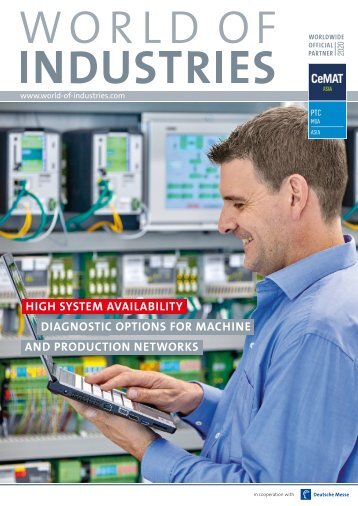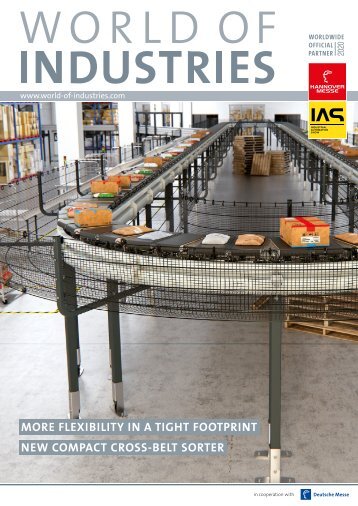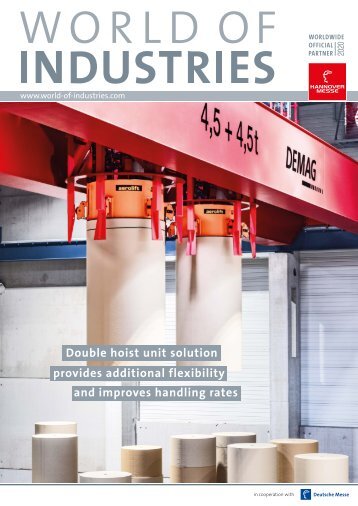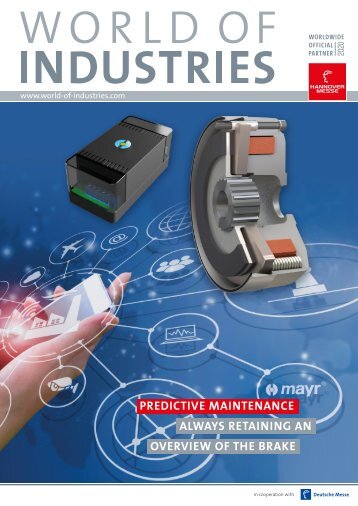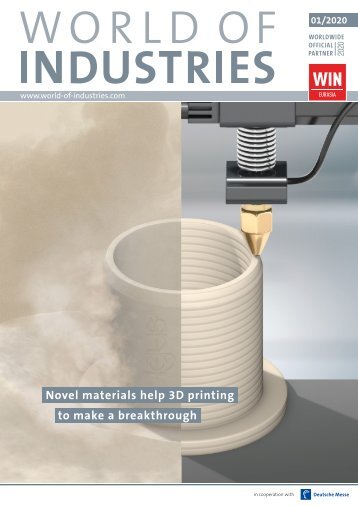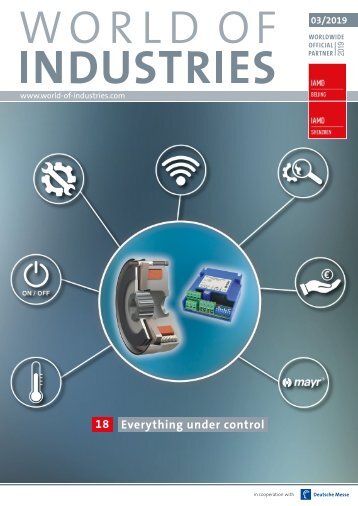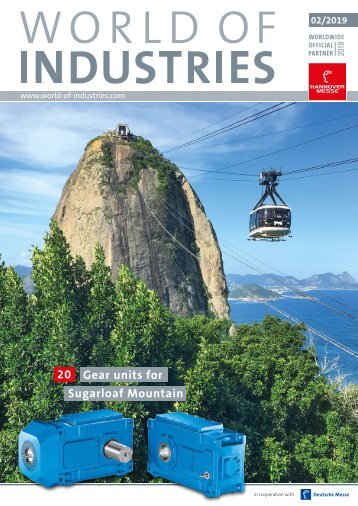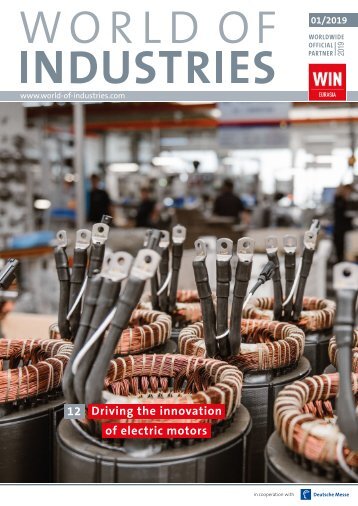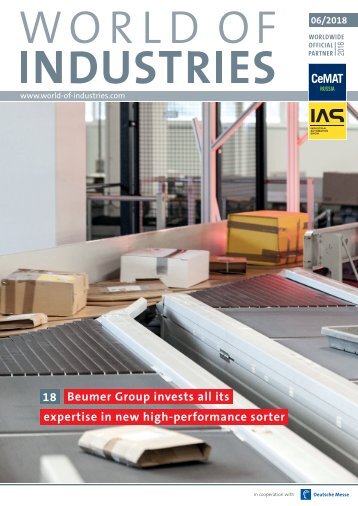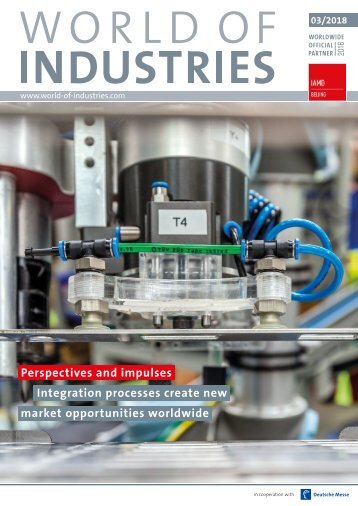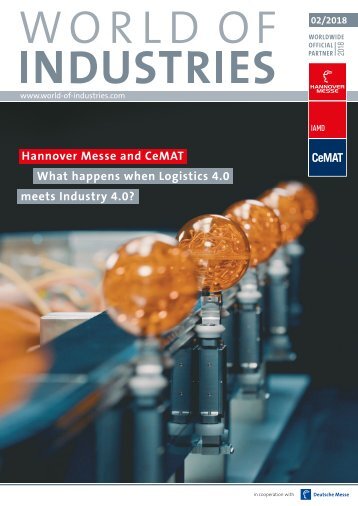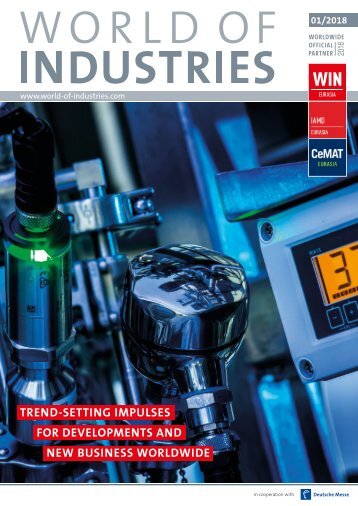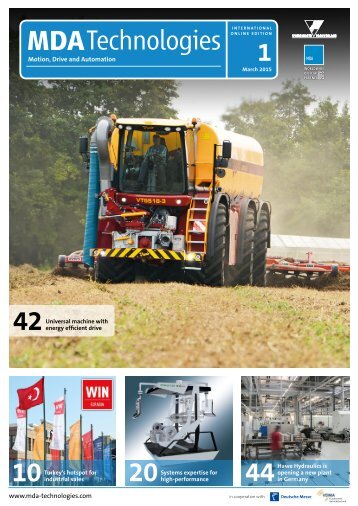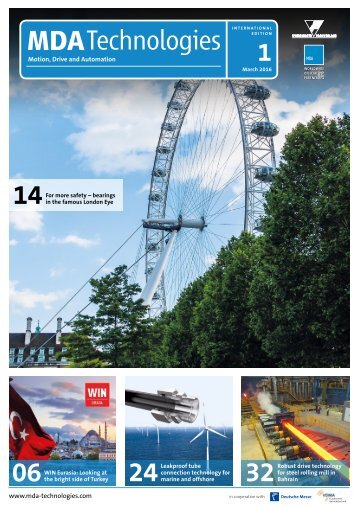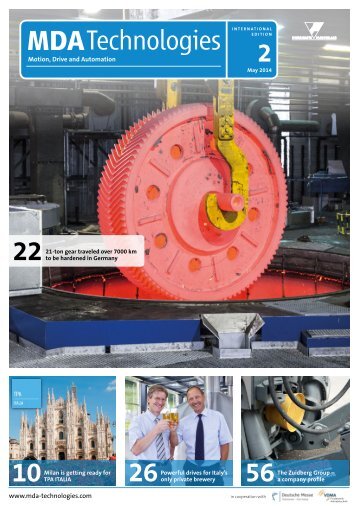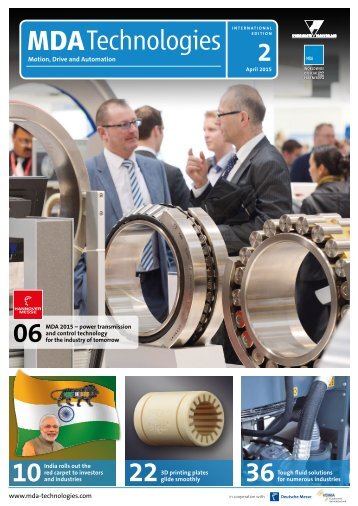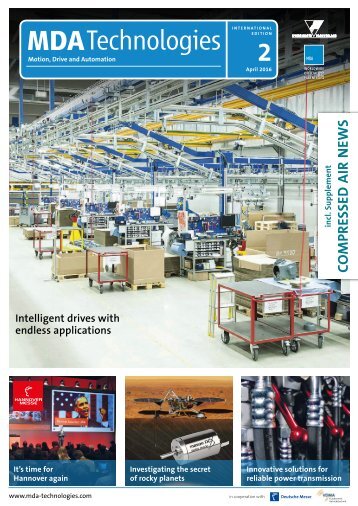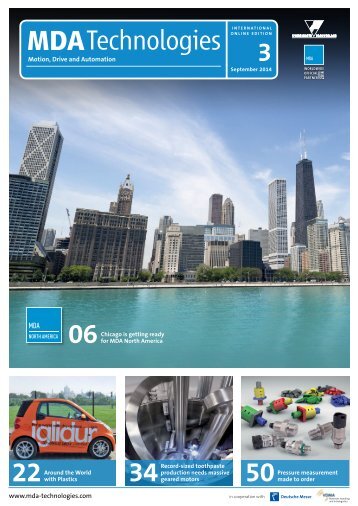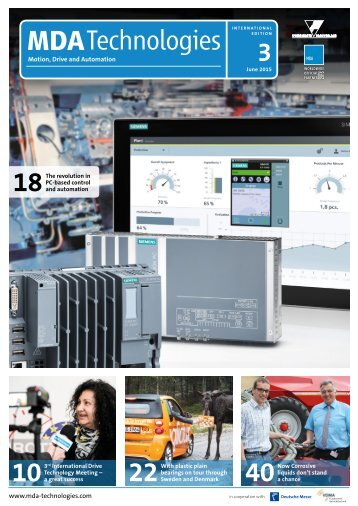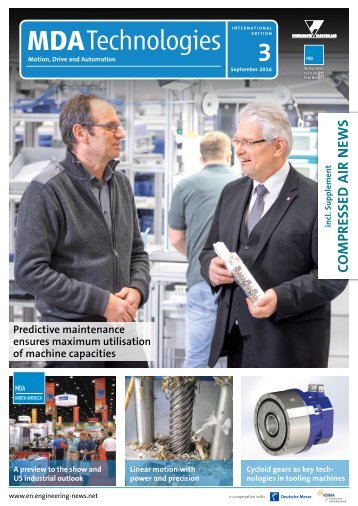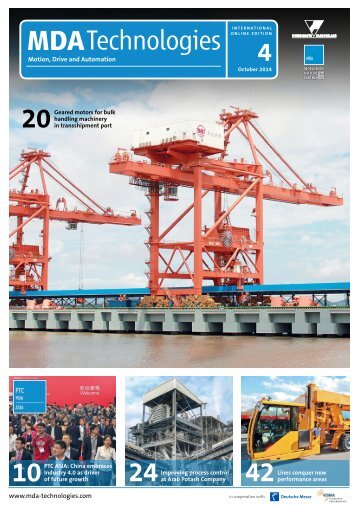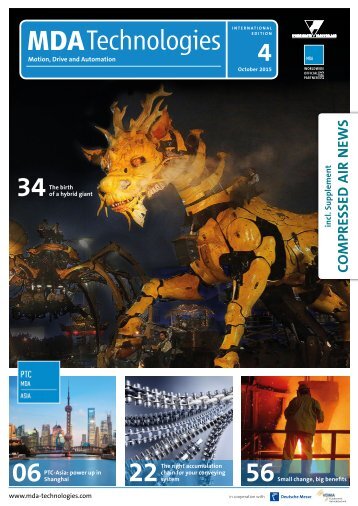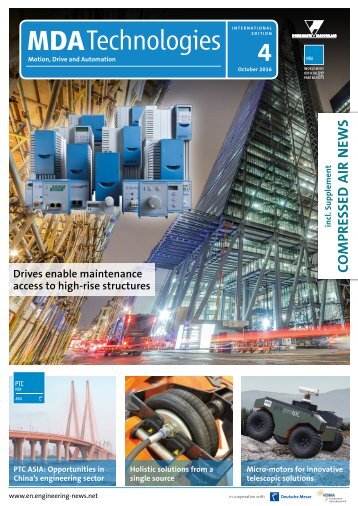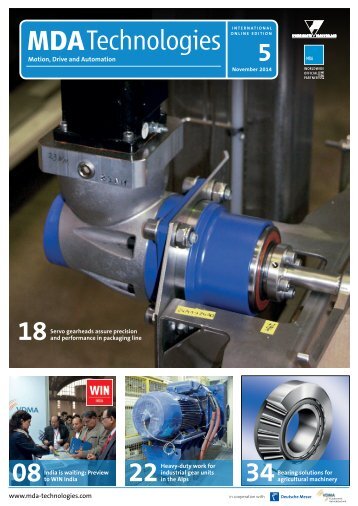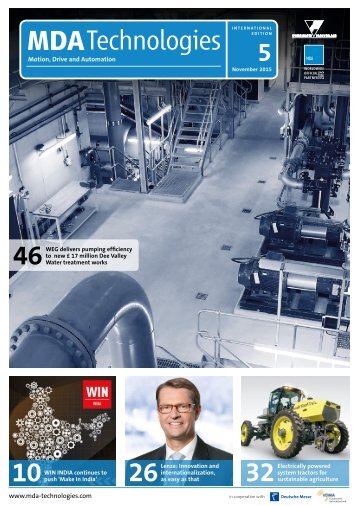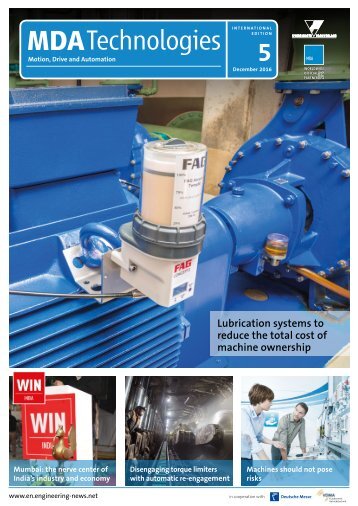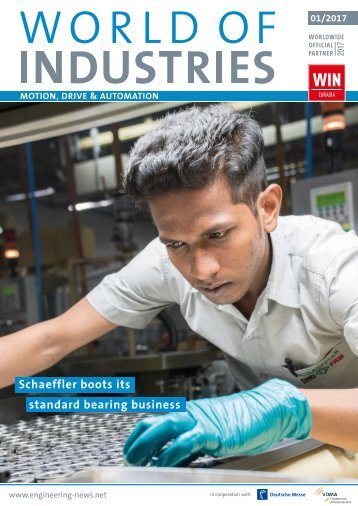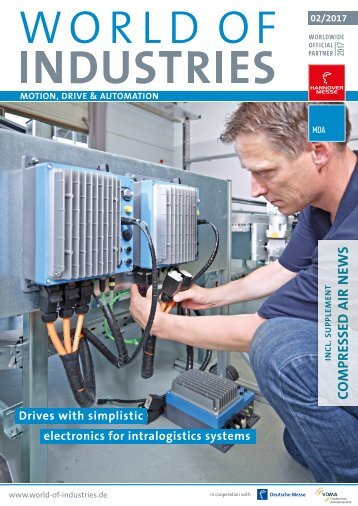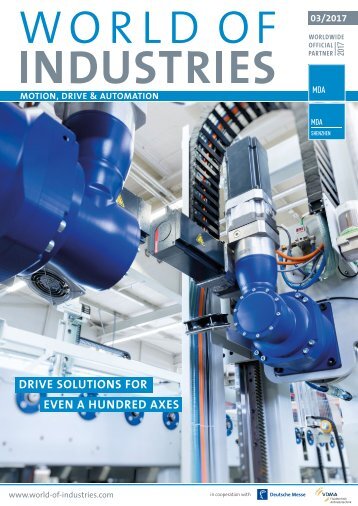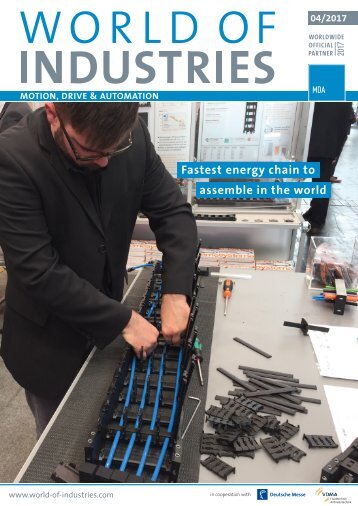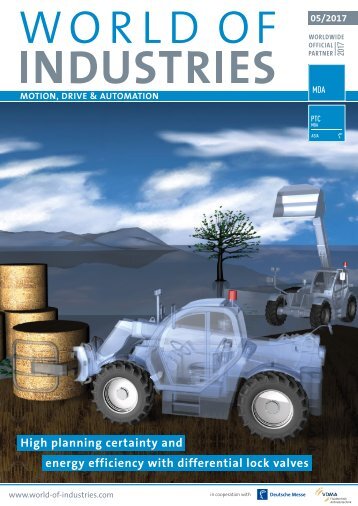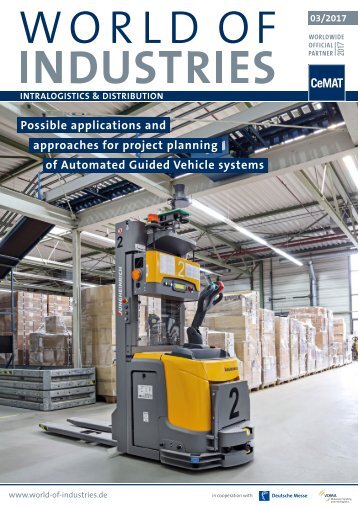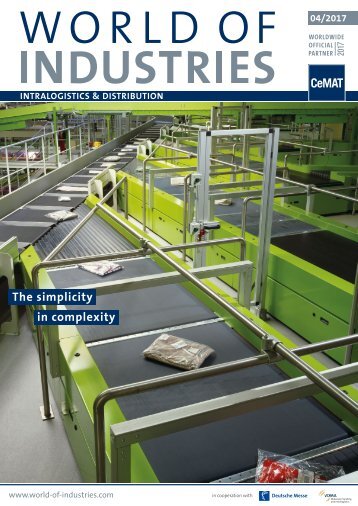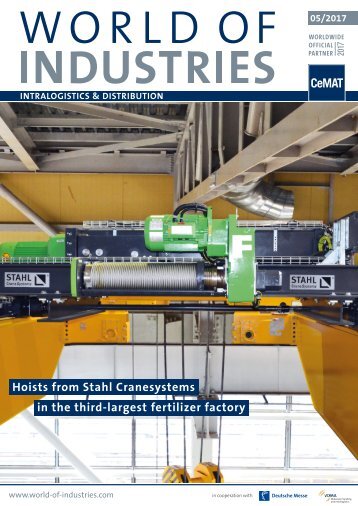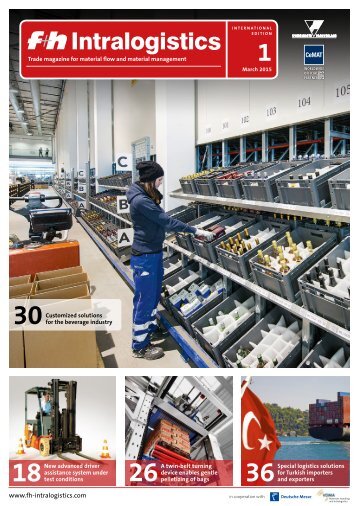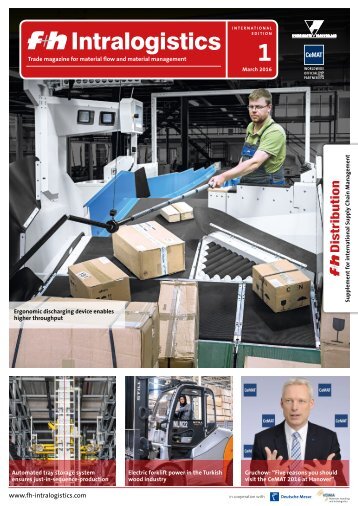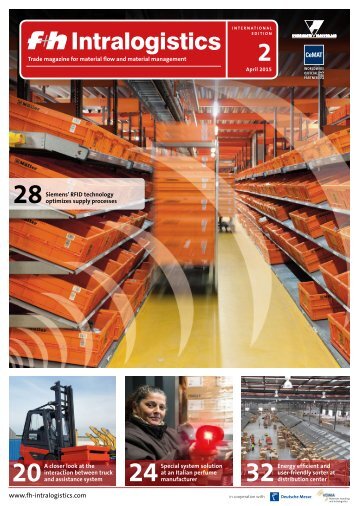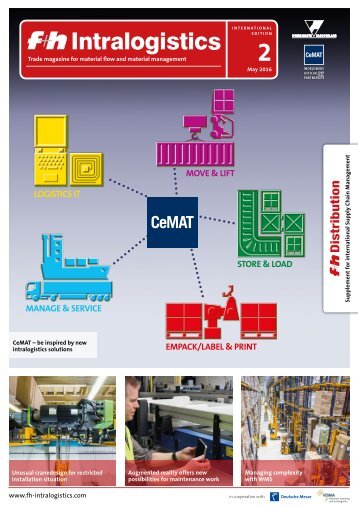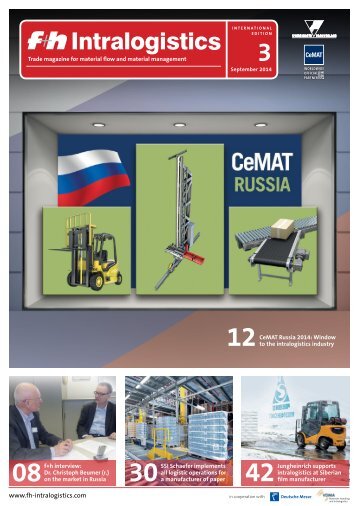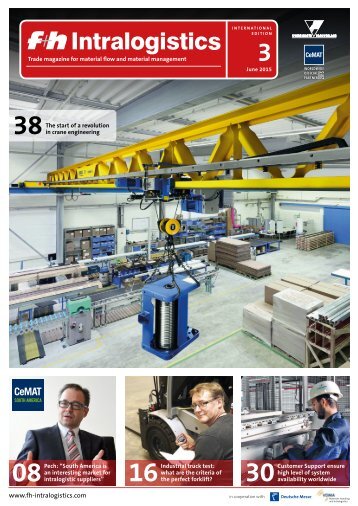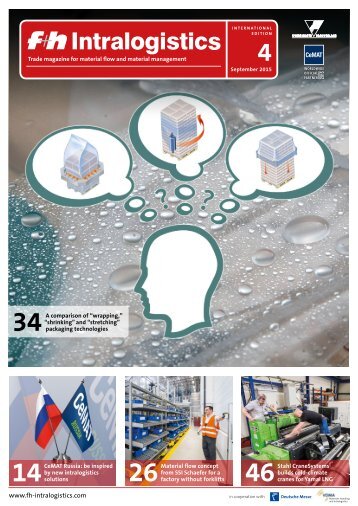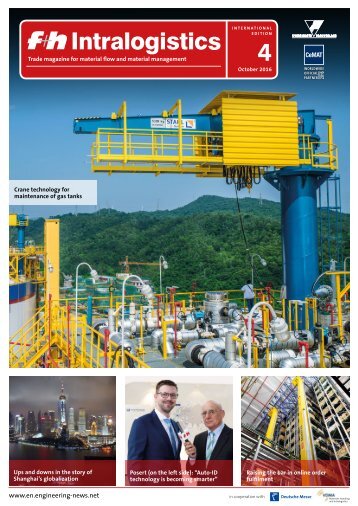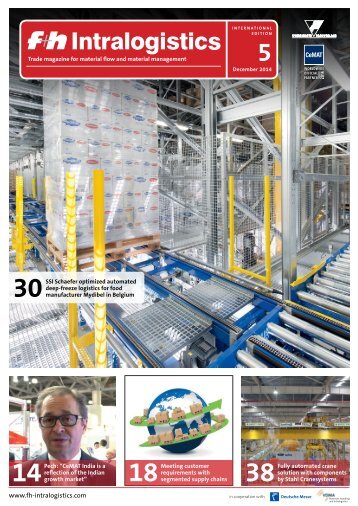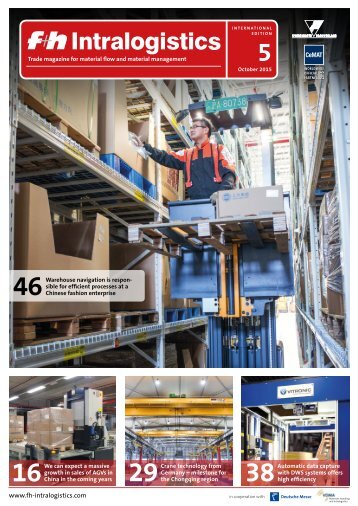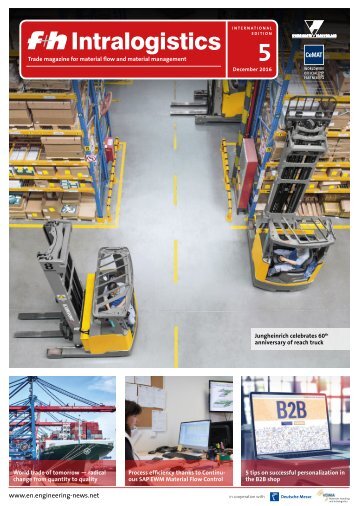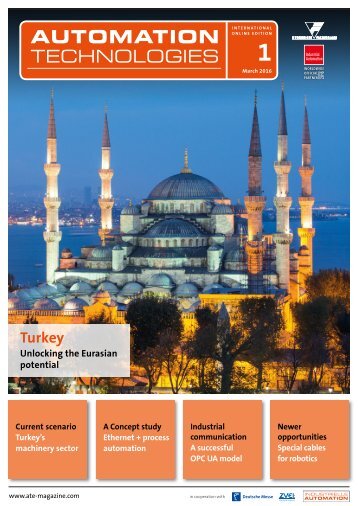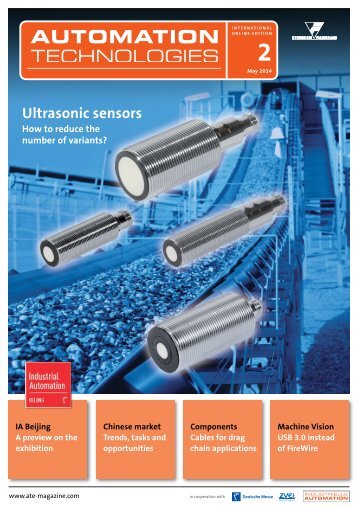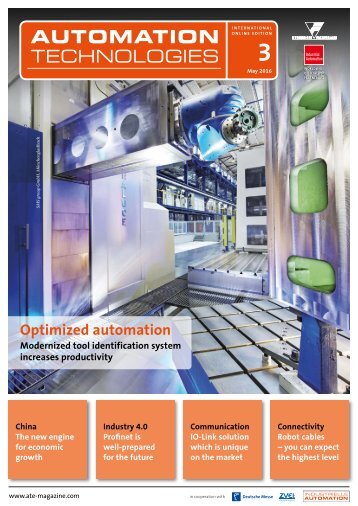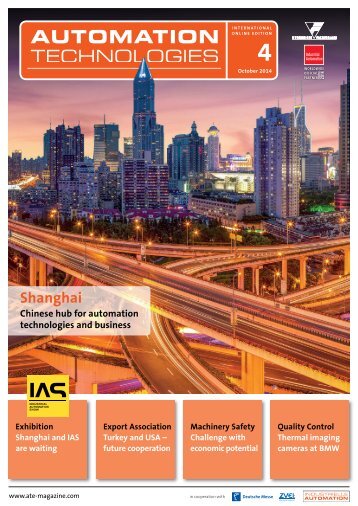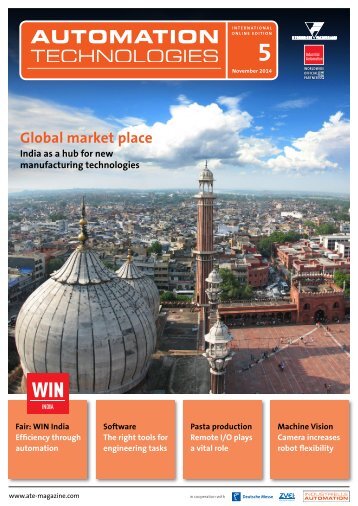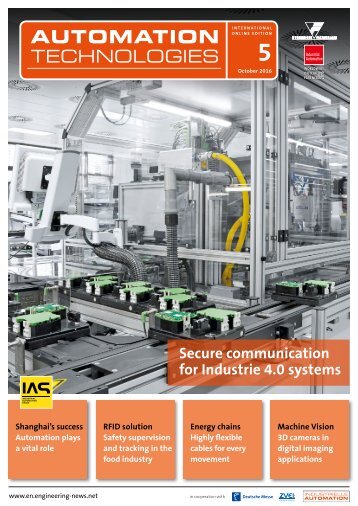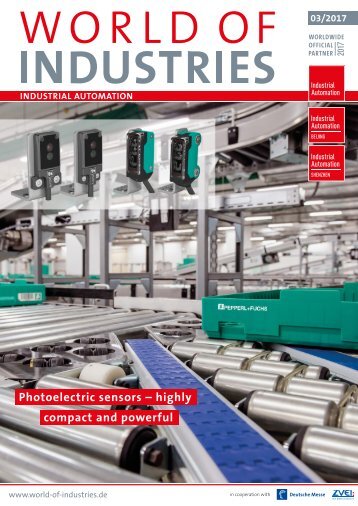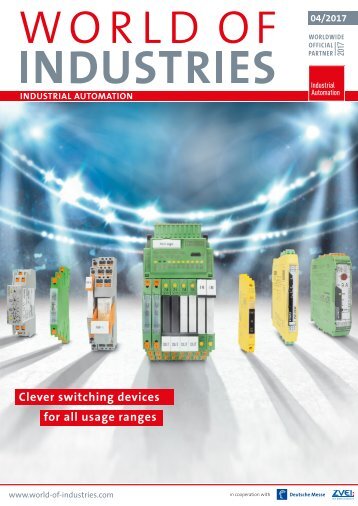WORLD OF INDUSTRIES - MOTION, DRIVE & AUTOMATION 4/2017
- Text
- Mda
- Automation
- Industries
New solutions for
New solutions for efficient batteries in industrial electric vehicles Electric drives are on the rise, also in the industrial sector, though not as fast as on the automotive market MACHINE ELEMENTS Batteries are the heart of an electric vehicle. In order to derive the best performance out of an electric vehicle, the battery needs to be in excellent condition. By using oil instead of water for cooling and specially designed hoses and connectors, the service life and operational performance of the battery can be improved significantly. Author: Markus Linzmaier, Innovation Manager at ContiTech Mobile Fluid Systems All over the globe, one can witness the rise of electric-powered drivetrains which are designed to shift vehicle design away from the use of fossil fuels and carbon gas emissions. The demand for electric vehicles is increasing in the commercial automotive sector and even in the industrial sector, though not as fast as the automotive market. German technology conglomerate, Continental is developing solutions for those applications that increase the efficiency, and thus the range and durability, of the batteries used in electric vehicles. The latest developments are special hoses and lines for cooling the battery using oil instead of the more commonly used cooling water (water-glycol mixture). This results in very new requirements for the hoses and lines used in e-vehicles. At the same time, however, it opens up completely new opportunities. The batteries in electric vehicles work at their most efficient at temperatures between 10 and 30 °C. This temperature spectrum enables long operation times and ranges, extends battery life and allows the batteries to work more efficiently. For that reason, the batteries have to be either cooled or heated, depending on the outside temperature. Some manufacturers are now increasingly relying on oil as the relevant medium or are immersing batteries directly in the oil. The manufacturers expect a significant extension in range for their e-vehicles if an oil bath is used. Until now, reducing the temperature of the batteries has largely been achieved by means of cooling water. Classic heating and cooling lines have carried the relevant media. However, this system also brings risks with it: WORLD OF INDUSTRIES – MOTION, DRIVE & AUTOMATION 4/2017
01 Challenge met: The hose developers succeeded in improving the under- and overpressure resistance of the oil cooling line by 50 % 02 Almost 4 meters long: classic line for the battery cooling system in hybrid and electric vehicles In the event of a leak, the battery could come into contact with the water which, in the worst-case scenario, could cause a short-circuit, resulting in total failure of the battery. Costly precautions still have to be taken to exclude this risk. The situation is different with oil since it does not have any charge carriers and therefore does not conduct electricity. This even means that the battery can be completely immersed in oil. As a result of its insulating effect, therefore, it reduces the impact of outside temperature action and thus also the need for regulation. Advanced materials for hoses and connectors One challenge faced by the hose developers was the specification to cut weight by up to 25 % – while the requirements for under- and overpressure resistance were increased by 50 % at the same time. The tight bending radii in vehicle compartments with restricted space also had to be taken into account. Continental addresses this by using special, harder compounds with reduced wall thicknesses at the same time so that the hoses do not lose the flexibility that is required in the tight package spaces. On the other hand, the hoses for this application are not subject to the same high pressures as classic oil hoses. That allows the developers to contemplate the use of completely new materials. After all, completely different requirements in terms of pressure, temperature and acoustics are applicable here. The connecting systems represent another challenge since the developers cannot use the classic connectors in the tight package spaces available in the electric vehicles. A new, significantly more compact solution therefore also had to be found here. The search for new solutions is aided by the fact that the type of customer involved in the field of e-mobility is completely new. Specifications as usually encountered with the traditional manufacturers are generally a thing of the past here, replaced instead by a bold readiness to try something new. These customers are looking for flexible suppliers who will develop the perfect solutions for and with them – generally before the series-production order is placed. Only a company with extensive material and development expertise and the willingness to think outside the box can deliver this upfront performance. Moreover, Continental develops water cooling solutions, which also require a sophisticated thermal management system. The hose and pipe systems are correspondingly complex. Continental already supplies solutions for the cooling system which manufacturers can install easily and which ensure that units do not overheat, the batteries achieve their maximum lifetime, and the occupants do not have to forgo the level of warmth to which they have become accustomed. Unlike conventional vehicles, electric vehicles require two cooling circuits. Water, which still is the most commonly used cooling medium, cools power components such as the motor and electron- ics, on the one hand, and the battery, on the other. It makes sense to supplement the water or oil cooling system at high thermal loads using the air-conditioning system’s refrigerant circuit. A new connector enables Continental to minimize pressure losses in this process. The weight of the new generation hose has also been reduced. Smaller line cross-sections on the high-pressure side and in the battery cooling line help to ensure that as little refrigerant as possible has to be used. The right mixture of rubber, plastic and aluminum materials and an ingenious line geometry ensure the system has adequate inherent stability. Heat pump instead of resistance heater Electric vehicles also have to be heated. However, the vehicle will not get far with a conventional electric resistance heater. Since the heater also draws its power from the battery, the vehicle will sacrifice almost half of its range or durability. Heat pumps represent an alternative. Here, the air-conditioning system serves as a heater in winter by reversing the direction of flow of the refrigerant. That also eats into the range and durability, but substantially less than with a resistance heater. Vehicles with a heat pump can drive more than 50 % further. And the heat pump efficiency could be further increased by using the natural refrigerant CO 2 . So Continental’s developments are providing the essential conditions for minimizing the disadvantages of today’s electric vehicles and thus increasing the acceptance of electro-mobility in industrial as well as commercial vehicles market. Photographs: Lead iStock.com/stockvisual, 01-02 ContiTech AG https://contitech.de/en-GL About ContiTech AG Continental AG is known to be a reliable partner that provides solutions for transportation of goods. In 2016, the corporation generated sales of € 40.5 billion with its five divisions, Chassis & Safety, Interior, Powertrain, Tires, and ContiTech. Continental employs more than 227,000 people in 56 countries. As the industrial specialist division of Continental AG, ContiTech provides intelligent solutions to its customers in industries such as machine & plant engineering, mining, agricultural machinery and the automotive industry. With around 43,000 employees in 44 countries, the company generated revenues of around € 5.5 billion in 2016. WORLD OF INDUSTRIES – MOTION, DRIVE & AUTOMATION 4/2017
- Page 1 and 2: 04/2017 MOTION, DRIVE & AUTOMATION
- Page 3 and 4: EDITORIAL Good enough for US bosses
- Page 5 and 6: TABLE OF CONTENT World champions in
- Page 7 and 8: ment rate. In 2016, the U.S. had an
- Page 9 and 10: Paris climate deal and energy polic
- Page 11 and 12: The Rheintacho group expands, takes
- Page 13 and 14: “The innovative strength in the p
- Page 15 and 16: Dynamic Solutions Expertise. For a
- Page 17 and 18: Tooth Chain Inverted Tooth Chain Dr
- Page 19 and 20: series series 01 Bearing pre-load a
- Page 21 and 22: We used to test compatibility over
- Page 23: ENERGIEKETTEN 4:38 p. m. The igus e
- Page 27 and 28: Voith combines its hydraulics exper
- Page 29 and 30: About Nord Drivesystems A developer
- Page 31 and 32: The Optimax 63 series gear heads ca
- Page 33 and 34: Suction and low-pressure hose for a
Inappropriate
Loading...
Mail this publication
Loading...
Embed
Loading...

